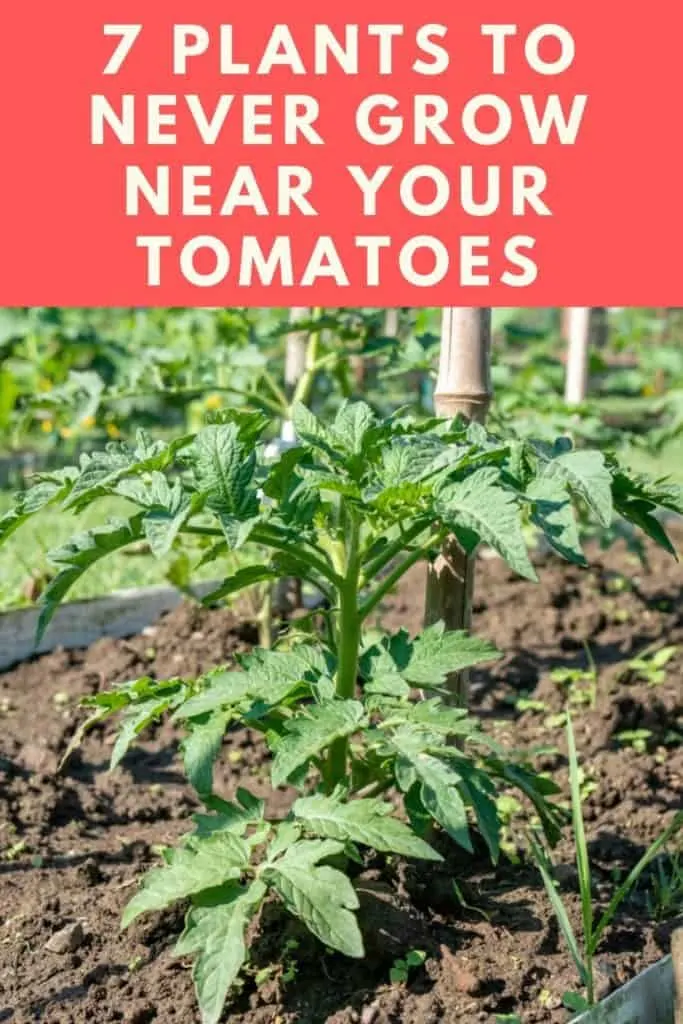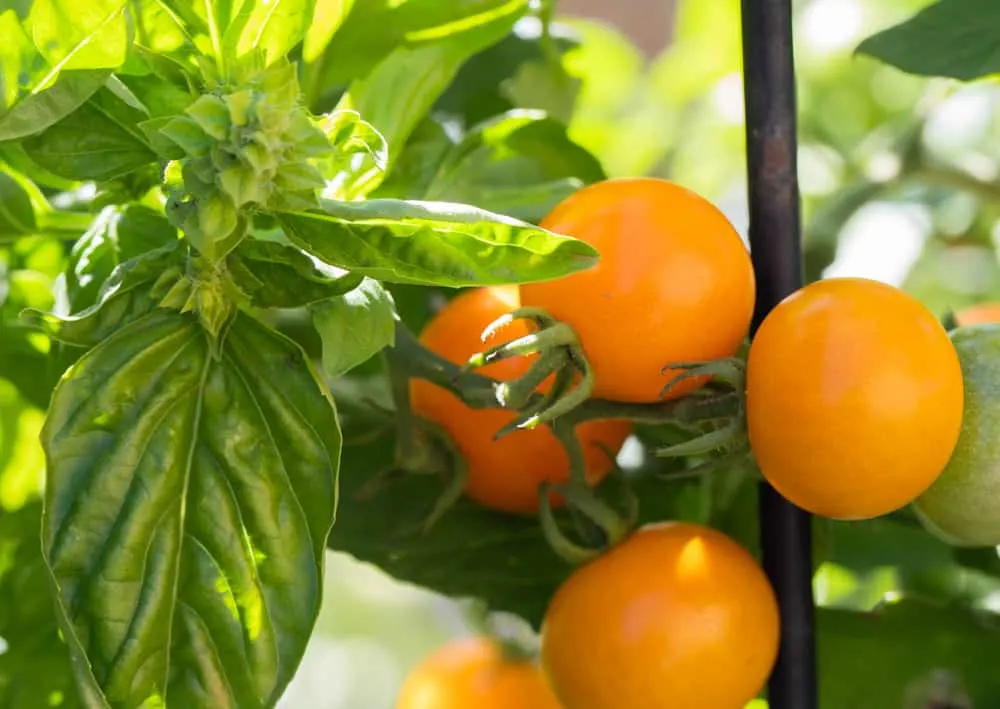
Whether you’ve experienced it yourself, or know someone who has, you likely understand how awful a bad neighbor can be.
Out in the garden, your tomato plants feel the same way (not about your neighbors – they’re probably impartial – but theirs).
The neighbors of your tomato plants can have a massive impact on their health. There are fantastic companion plants that help deter pests and improve health. The tomatoes may even help these plants out in return.
We’ve written about plants you should grow next to your tomatoes here.
You probably already know that planting marigolds with tomatoes is a good idea.
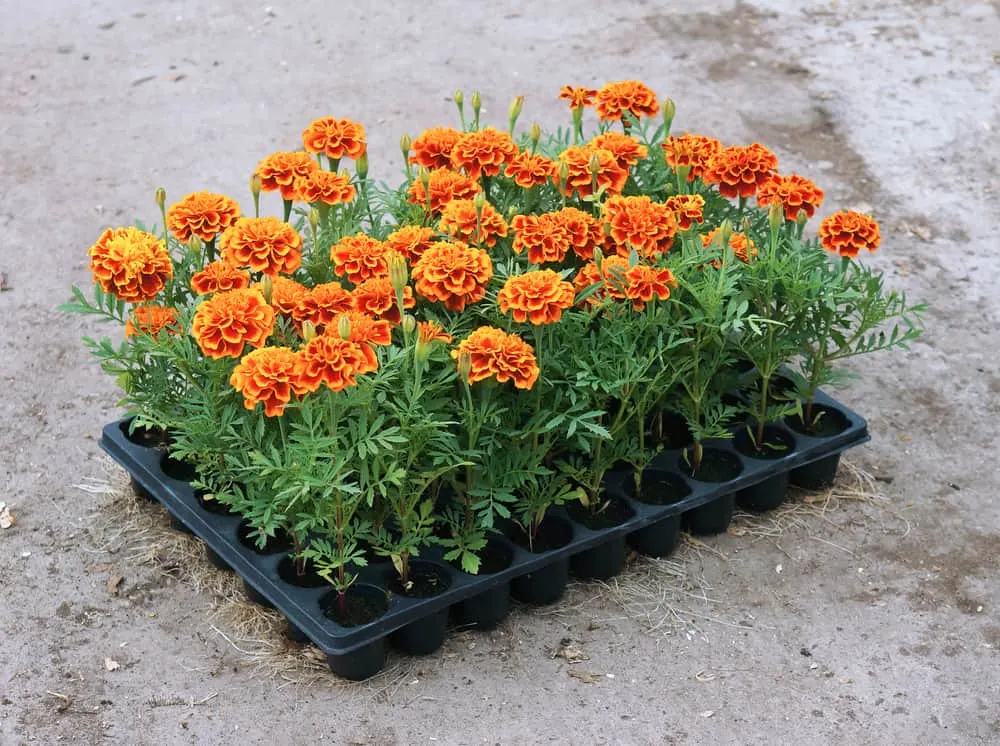
Then there are awful companion plants that do everything in their power to bring your tomatoes down.
Avoid the bad neighbors, plant some of the good ones, and you’ll be on your way to happier and healthier tomato plants.
Plant Incompatibility
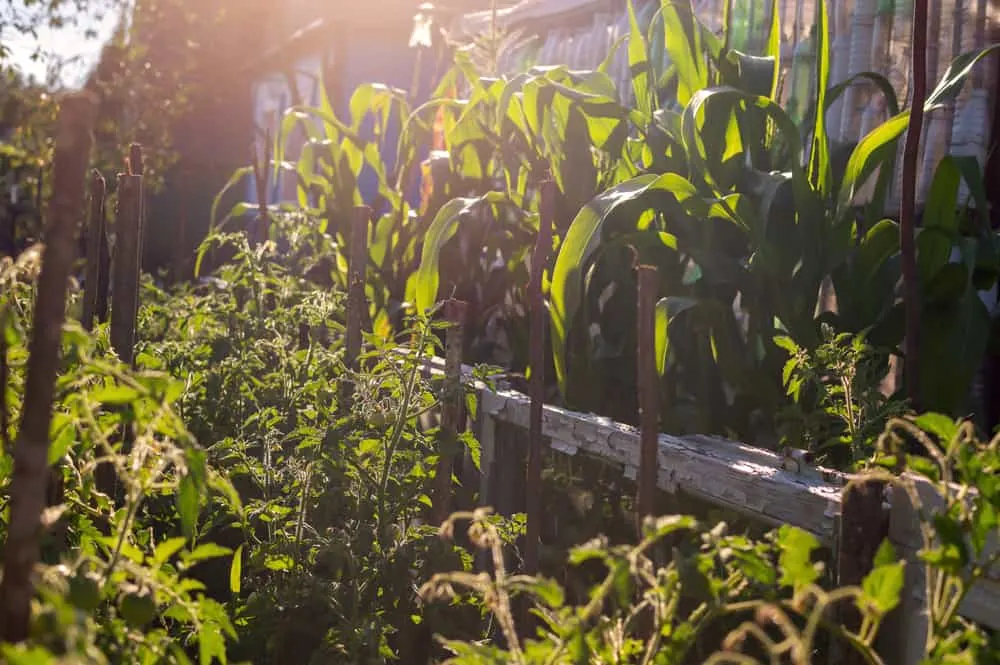
Unfortunately, as much as we try to ensure all our plants play nice, some just don’t mix well.
This is often because the plants have different growing conditions. A plant that prefers moist soil will not be happy next to a plant that requires minimal watering.
Two plant neighbors should have similar light requirements too and shouldn’t obstruct each other’s light source (tomatoes are often guilty of this problem).
The same goes for fertilizer – one nutrient-hungry plant could damage a neighbor that doesn’t need fertilizing as often.
However, some plants are so incompatible, they actively harm each other. They may attract certain pests that target the neighboring plant, or emit chemicals that inhibit the growth of the other. Two plants may share diseases, or alter the components of the soil to decrease nutrients and negatively impact flavor.
You don’t want a bad neighbor to ruin all your hard gardening work. Avoid placing these seven plants anywhere near your tomatoes to save yourself the trouble.
7 Plants To Keep Away From Your Tomatoes
1. Cabbage
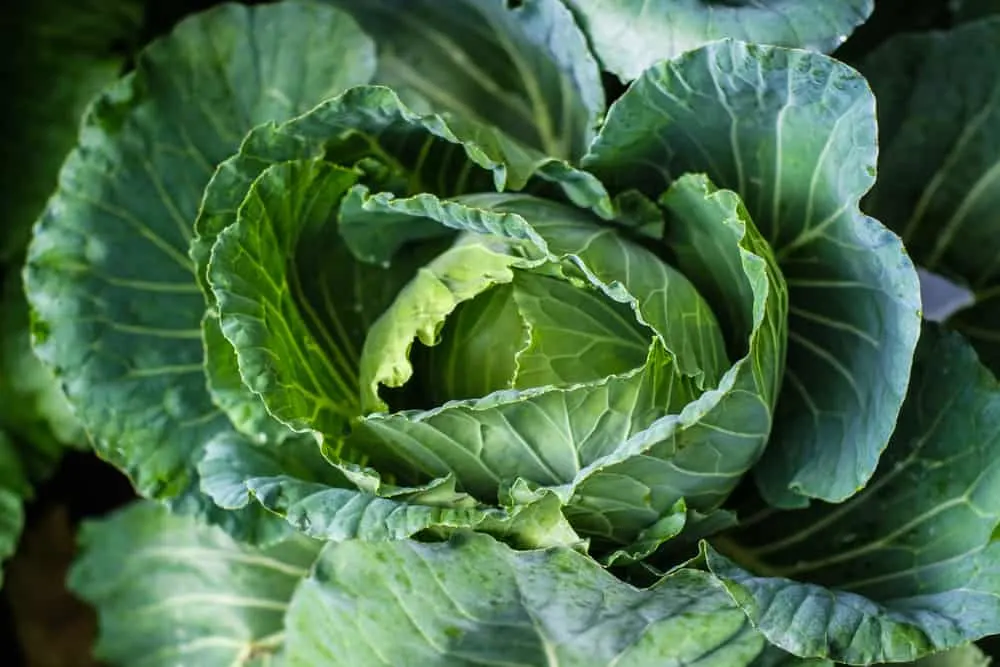
Cabbage, and all relatives of cabbage in the brassica family (broccoli, kale, etc.), should never be planted next to tomatoes. In the gardening world, they are considered sworn enemies, because brassicas inhibit the growth of the tomato plants.
Cabbages are heavy feeders and need plenty of nutrients throughout the growing season. Tomatoes are often considered heavy feeders too, but in comparison with cabbage, they tend to lose the competition.
When these two plants are grown next to each other, the cabbages will take up most of the soil nutrients, leaving little left for the tomatoes. The plants will not grow to maturity, and may not even produce fruit, making your tomato planting efforts completely futile.
2. Corn
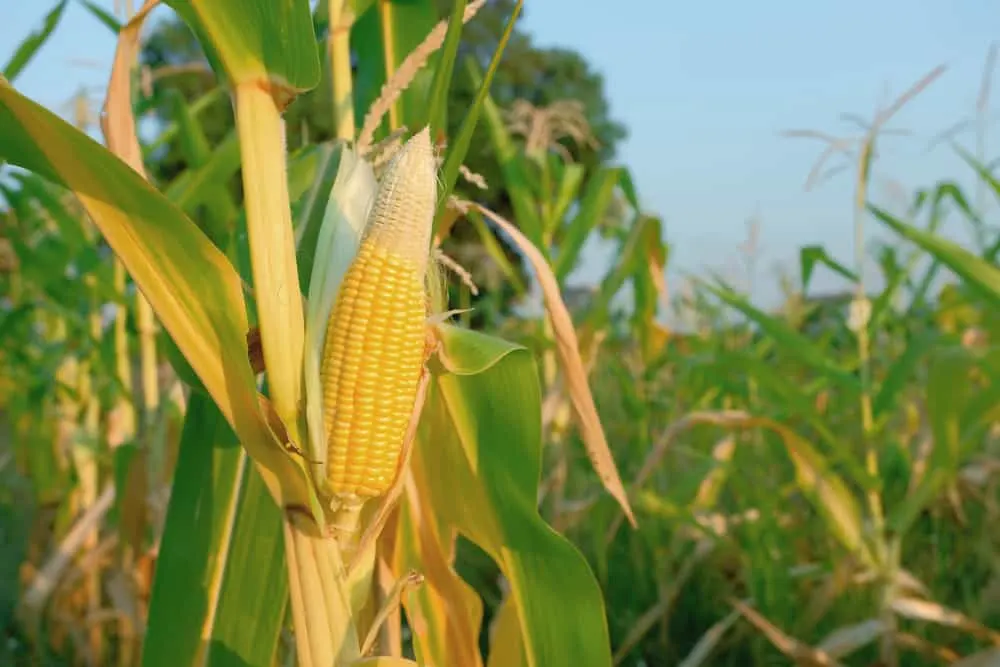
Another tomato enemy problematic for a different reason, is corn.
Corn earworm is one of the most destructive corn pests around. The larvae of this moth, with the scientific name Heliothus zea, feed on all parts of the corn ear, completely decimating the crop.
But these moths aren’t only a problem for corn plants.
Heliothus zea has another common name – tomato fruitworm.
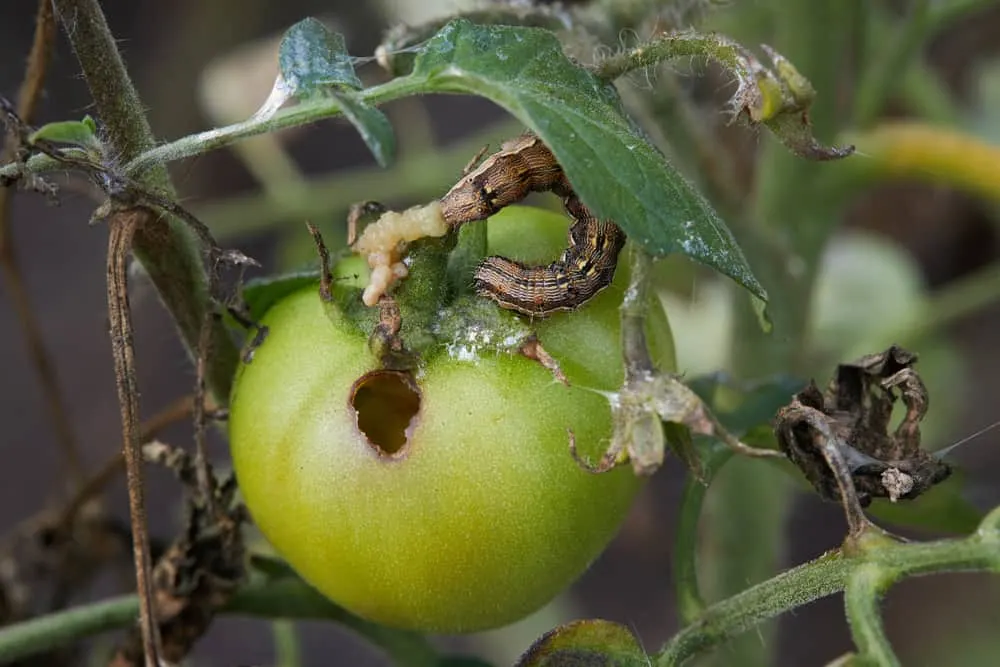
These same larvae tunnel into the tomato fruits and eat parts of the leaves and stems. Once they have burrowed into the fruit, they feast on the flesh from the inside out, making it completely inedible. They are also incredibly difficult to remove once they have burrowed as they can’t be treated directly.
Place corn and tomatoes next to each other, and you’ll create a corn earworm/tomato fruitworm heaven. It’s like an invitation for the pests to your garden, decreasing the likelihood of a successful corn and tomato harvest.
3. Fennel
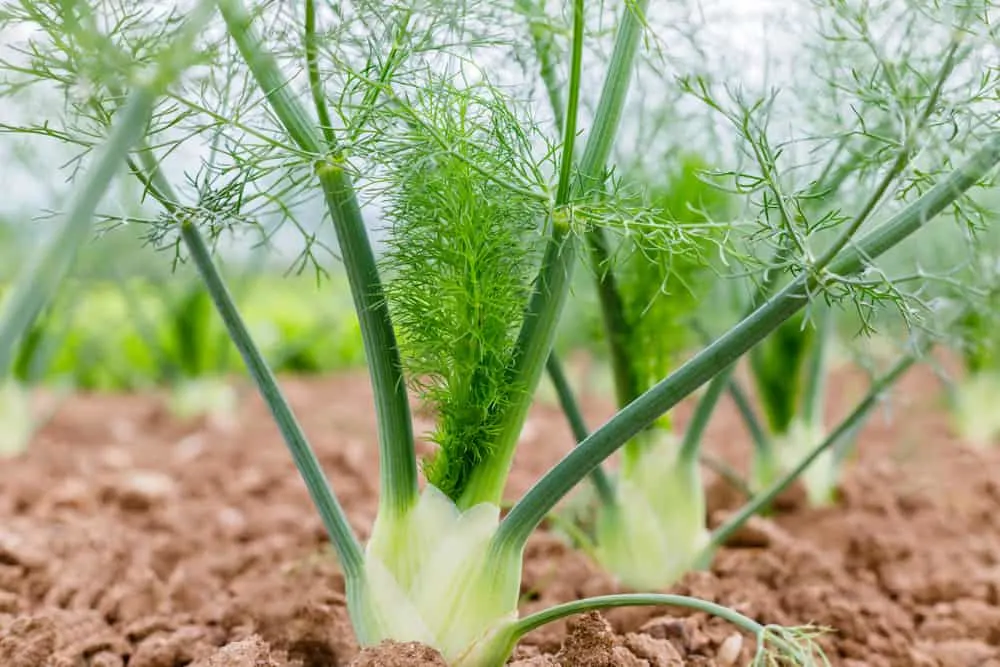
Tomato and fennel aren’t friends. In fact, fennel doesn’t have many friends in the garden. Most gardeners suggest fennel should be planted on its own or in a pot, as it is incompatible with several plants in your vegetable garden.
Like some other companion planting suggestions, this incompatible pairing doesn’t have much scientific evidence to back it up, but a lot of anecdotal evidence.
The roots of the fennel are said to release a chemical that inhibits the growth of a lot of plants – your precious tomatoes included.
This relationship seems illogical, since fennel is related to carrots, and carrots are great tomato companions. But it’s best to stay on the safe side, no matter how illogical, for the health of your tomatoes.
4. Dill
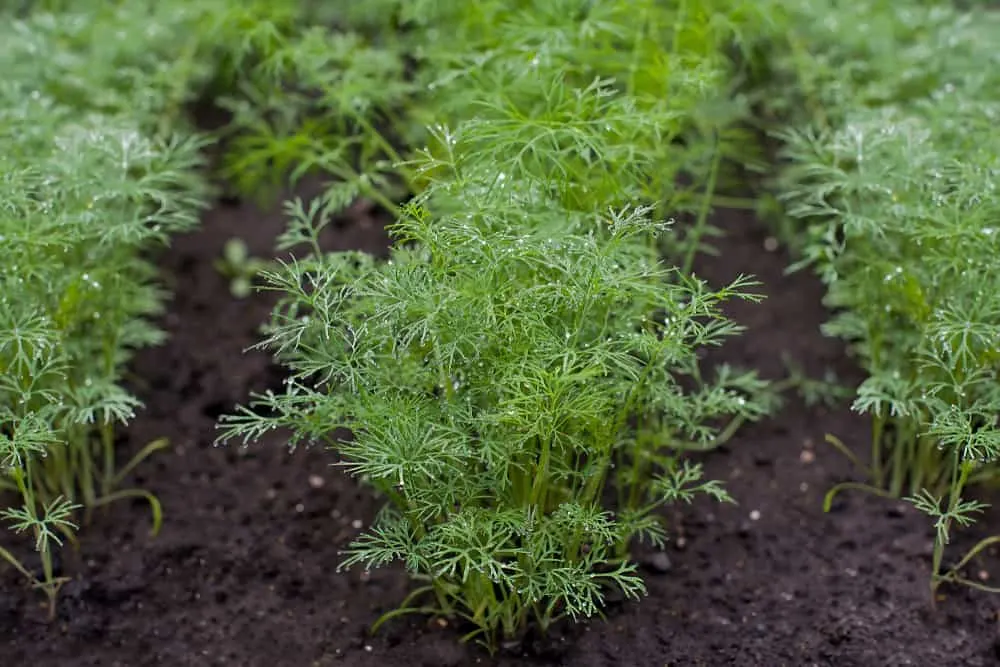
They aren’t necessarily enemies, but tomatoes and dill have a more complicated relationship than some other plants on this list.
In the early growing stages, dill acts as an ideal companion plant. It is said to improve tomato growth and repel certain pests, like aphids, that commonly affect tomato plants. However, once the dill plant matures, the relationship turns sour.
Some gardeners report that mature dill plants achieve the opposite results, inhibiting tomato plant growth rather than aiding it.
To make the most of this complex relationship, plant young dill next to your tomato plants and move them to another bed before they begin seeding. Or, if that’s too much trouble, avoid the dill altogether.
5. Eggplant
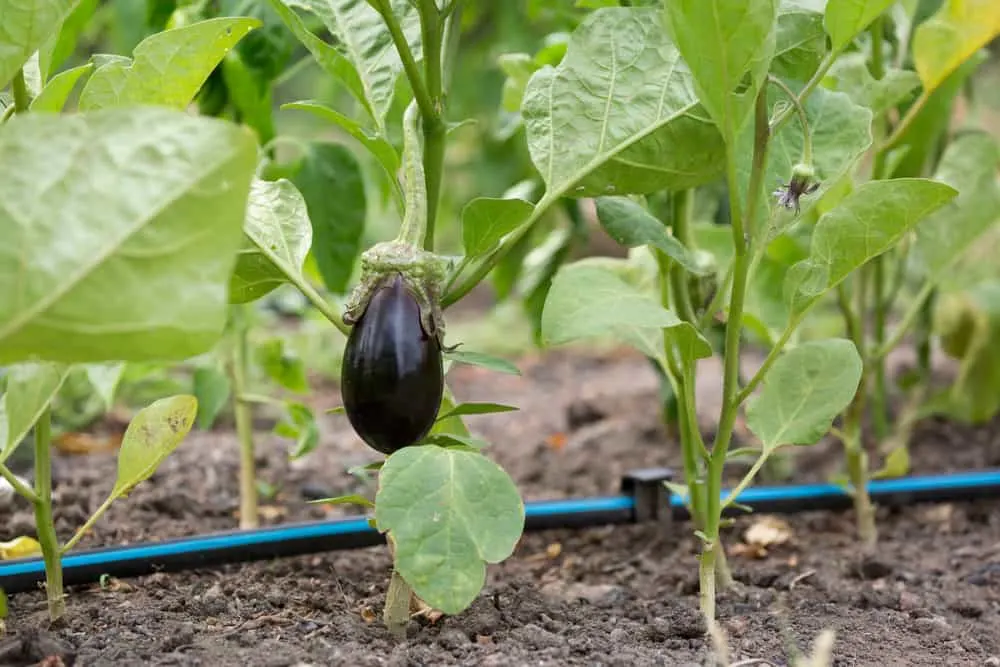
Although some gardeners suggest eggplant is a good companion for tomatoes, it can cause disease problems that are incredibly difficult to eradicate.
Eggplant and tomatoes are both susceptible to early and late blight.
Early blight affects tomato foliage, creating brown lesions that kill leaf tissue and cause them to drop. While this doesn’t affect the fruits, it can impact growth (fewer leaves mean less energy from photosynthesis) and expose the fruits to damage from the sun.
Late blight also starts in the tomato leaves but can spread to all parts of the plant, including the stem and fruit.
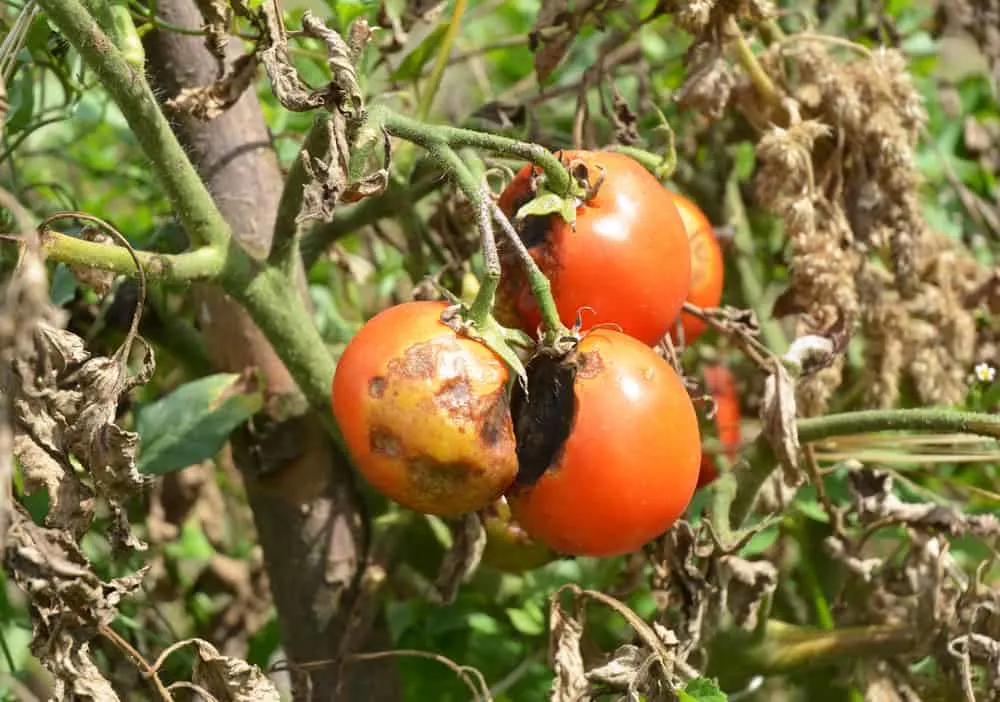
Planting eggplant and tomatoes together increases the chances that blight will spread to both plants, ruining your harvest. As blight can remain in the soil, it is also recommended to avoid planting eggplants in the same soil after tomatoes, or vice versa, for at least two years.
6. Potatoes
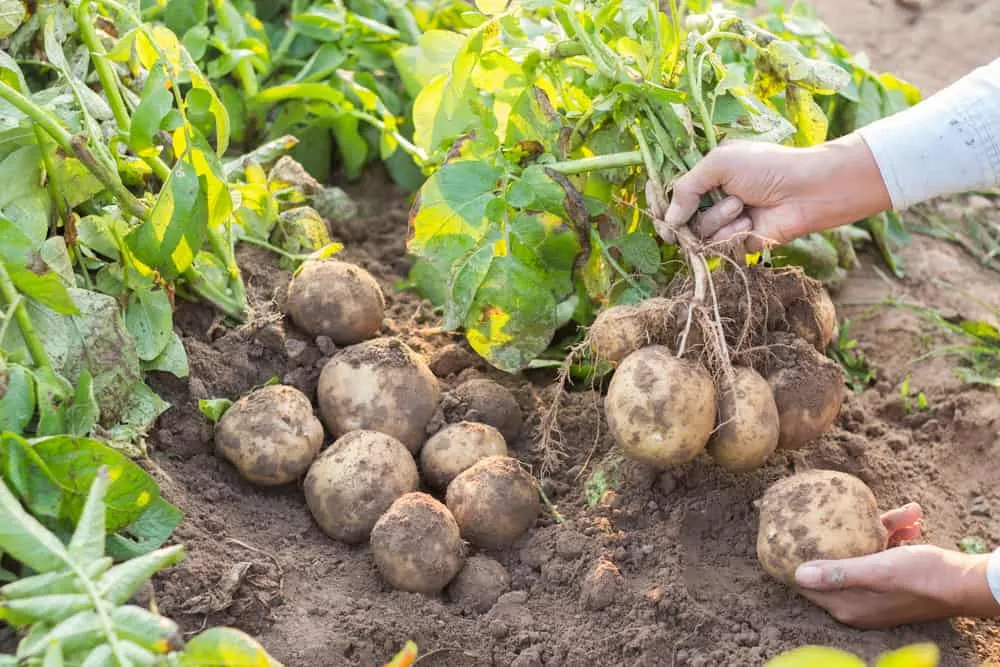
Potatoes and tomatoes are both members of the nightshade family. And, like eggplant, potatoes can cause problems with disease in your tomatoes.
Potatoes and tomatoes are susceptible to the same diseases, many of which are spread through the soil. Planting the two next to each other increases the likelihood that a disease problem with one plant will spread to the other.
If potatoes are planted too close to the tomatoes, the harvesting process can also damage the tomato roots, potentially inhibiting growth and causing blossom end rot.
7. Walnut
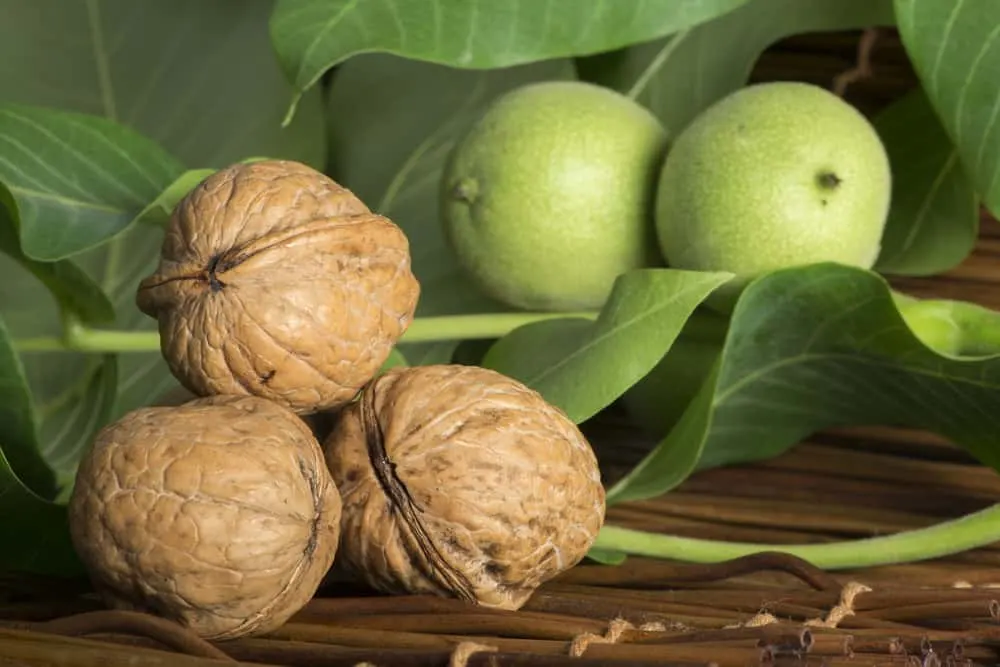
It may be a less likely combination, but a walnut-tomato duo is the most potentially damaging to your tomato plants.
Walnut trees are considered allelopathic. Allelopathy, a term coined by Austrian professor Hans Molisch in 1937, is a process where plants release chemicals that influence the growth of surrounding plants.
The walnut tree is the most often cited allelopathic plant as it produces juglone, which becomes a toxin when exposed to oxygen. This inhibits the growth of most plants, but particularly tomatoes as members of the Solanaceae family.
It’s why you should never throw walnuts or walnut shells in your compost.
If that wasn’t bad enough, tomatoes are also susceptible to the common disease walnut wilt. Between problems with growth and wilting, it is best to avoid this combination altogether.
These few incompatible plants could spell disaster for your tomato crop when planted together.
Luckily, there are many plants that can grow with your tomatoes. Take a look below for our guide to the best tomato companion plants.
